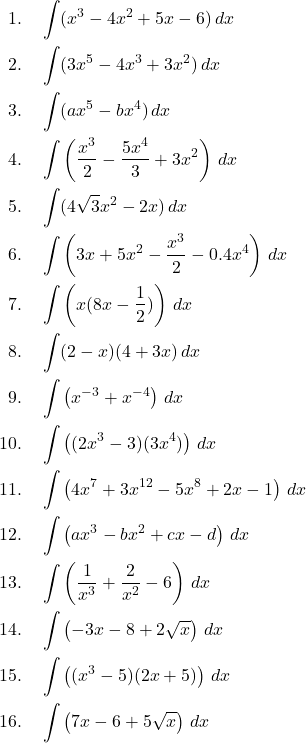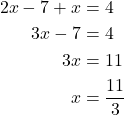Online GED Tutor Pakistan
Welcome to ASVA, Pakistan’s most trusted online tutor academy, offering top-notch GED tuition services. Our expert tutors provide comprehensive GED exam preparation, ensuring that you excel in your exams.
GED Tutors in Pakistan:
Comprehensive Online Tuition for GED Test Preparation
If you’re looking for GED tutors in Pakistan, look no further. Our online tuition services in Pakistan, specifically in Karachi, provide comprehensive preparation for the GED test. We understand the importance of achieving a GED certification, and our experienced tutors are here to guide you every step of the way. With our proven track record of success, we commit to helping you succeed in your GED journey.
I.B.A. Test Preparation
M.B.A. Test Preparation and Expert Entry Test Tutors in Karachi In addition to GED test preparation, we offer specialized assistance for various other tests, including M.B.A. tests, Karachi University exams, I.B.A., LUMPS, and other universities in Pakistan.
Our expert entry test tutors know the requirements of these exams well and offer targeted guidance to help you excel. Whether you need assistance with GRE, GMAT, M.B.A., GED, SAT, IELTS, or TOEFL, our tutors can support you in achieving your goals.
Entry Test Preparation in Saudi Arabia
Online Comprehensive Entry Test Preparation in Saudi Arabia We are proud to extend our online comprehensive entry test preparation services to students in Saudi Arabia as well. With the convenience of online learning, students in Saudi Arabia can access our expert tutors from the comfort of their homes. We understand the unique requirements of entry tests and tailor our instruction to ensure that we fully prepare you to tackle the challenges of these exams.
Entry Test Tutors in Karachi
Best Online Entry Test Tutors in Karachi and Expert IELTS Tutors When it comes to online entry test preparation, we take pride in being the best in Karachi. Our tutors are highly qualified and experienced, specializing in various fields such as engineering, medical sciences, business studies, and more. Additionally, Our dedicated expert IELTS tutors provide help to ensure you achieve your desired score. With their guidance, you can enhance your English language skills and excel in the IELTS exam.
FAQs about GED Test
Q: What is the GED test?
A: The General Educational Development (GED) test is a set of exams designed to assess the knowledge and skills equivalent to those of a high school graduate. It provides an opportunity for individuals who did not complete high school to earn a credential that is widely recognized as an equivalent to a high school diploma.
Q: What subjects are covered in the GED test?
A: The GED test covers four subjects:
- Reasoning Through Language Arts (RLA): This section tests reading comprehension, grammar, and writing skills.
- Mathematical Reasoning: This section assesses mathematical concepts and problem-solving skills.
- Social Studies: This section covers topics such as history, geography, civics, and economics.
- Science: This section focuses on scientific reasoning and knowledge in areas such as life sciences, physical sciences, and Earth and space sciences.
Q: How long does it take to complete the GED test?
A: The GED test is divided into separate sections, and the total test duration varies. Typically, the entire test can take around 7.5 hours to complete. However, test-takers can choose to take each subject test separately, allowing for more flexibility in scheduling.
Q: What is the passing score for the GED test?
A: Each subject test in the GED is scored on a scale from 100 to 200. To pass, you need a minimum score of 145 on each subject test. Achieving a score of 165 or higher on a subject test can qualify you for the GED College Ready level, which indicates readiness for college-level courses.
Q: How can I prepare for the GED test?
A: There are various ways to prepare for the GED test:
- Self-Study: You can use GED preparation books, online resources, and practice tests to study independently.
- GED Classes: Many community colleges and adult education centers offer GED preparation classes.
- Online Resources: Several websites provide study materials, practice tests, and interactive lessons specifically tailored for the GED test.
- GED Test Prep Courses: There are commercial GED test prep courses available that offer structured instruction and support.
Q: Where can I take the GED test?
A: The GED test is administered at official GED testing centers, which can be found in various locations, such as community colleges, adult education centers, and testing centers. You can find a nearby testing center by visiting the official GED website or contacting your local adult education office.
Q: Can I take the GED test online?
A: Yes, in response to the COVID-19 pandemic, some locations have offered online GED testing options. However, availability and eligibility for online testing may vary depending on your location and specific circumstances. It’s best to check with the official GED website or your local GED testing center for the most up-to-date information.
Q: Is the GED test accepted by colleges and employers?
A: Yes, the GED credential is widely accepted by colleges, universities, and employers as equivalent to a high school diploma. However, it’s always recommended to check with specific institutions or employers to ensure they recognize the GED credential.
Q: Can I retake the GED test if I don’t pass?
A: Yes, if you don’t pass a subject test, you have the opportunity to retake that specific test. There are usually waiting periods and restrictions on the number of retakes allowed, so it’s essential to review the policies set by your local GED testing center.
Q: How long is the GED credential valid?
A: The GED credential does not expire. Once you earn your GED, it is considered a lifelong certification of your high school equivalency.
GED – All About GED – What GED is? For Whom GED is?
All About GED – What GED is?
The GED Test, or General Educational Development Test, is an internationally recognized high school equivalency exam. It is designed for individuals who did not complete their traditional high school education and provides them with an opportunity to earn a credential that is equivalent to a high school diploma.
GED Test, A Comprehensive Exam
The GED Test, commonly known as the General Educational Development Test, is a comprehensive examination that offers individuals an alternative path to attaining a high school equivalency credential.
Specifically designed for those who were unable to complete their traditional high school education, the GED Test provides a valuable opportunity to earn a diploma equivalent to a high school diploma.
With its international recognition, the GED Test serves as a viable option for individuals seeking to further their education, enhance their career prospects, or pursue higher education. By successfully passing the GED Test, individuals can open doors to a variety of opportunities, including better job prospects, access to higher education institutions, and personal fulfillment.
A Brief History of the GED
The General Educational Development (GED) Test has a rich history that spans several decades. From its inception to its current form, the GED has served as a pathway for individuals to obtain a high school equivalency credential. This article provides a concise overview of the key milestones in the history of the GED.
Development of the GED Test:
In the late 1930s, during the Great Depression, the American Council on Education (ACE) introduced the GED Test as a means to assess the academic skills and knowledge of individuals who had not completed high school. The test aimed to create opportunities for those who were unable to pursue traditional education due to economic challenges or other circumstances.
Over time, the GED Test evolved and adapted to meet changing educational standards and societal needs.
Expansion and Standardization:
Modernization and Computerization:
Alignment with Common Core Standards:
Eligibility Requirements:
GED Tests:
The Five tests are:
Reasoning Through Language Arts (RLA):
Mathematical Reasoning:
Social Studies:
Science:
Civics:
- Writing Skills (75 minute multiple-choice and 45 minute essay):
- Social Studies (70 minutes)
- Science (80 minutes)
- Literature (65 minutes)
- Mathematics (90 minutes)

 Mathematics Worksheets, ASVA provide calculus and Algebra worksheets.
Mathematics Worksheets, ASVA provide calculus and Algebra worksheets.

![Rendered by QuickLaTeX.com \[ i^n = \begin{cases} 1 \quad \text{if } n \mod 4 = 0 \\ i \quad \text{if } n \mod 4 = 1 \\ -1 \quad \text{if } n \mod 4 = 2 \\ -i \quad \text{if } n \mod 4 = 3 \end{cases} \]](https://pakistanonlinetuition.com/wp-content/ql-cache/quicklatex.com-86b22a40afad08e7534c3cda493a9a72_l3.png)
![Rendered by QuickLaTeX.com \[ \text{Im}(e^{i\theta}) = \sum_{\text{n odd}} \frac{(-1)^{(n-1)/2} \theta^n}{n!} = \sin{\theta} \]](https://pakistanonlinetuition.com/wp-content/ql-cache/quicklatex.com-e36baffbdc9ce1f10bf6972fadc318e1_l3.png)



